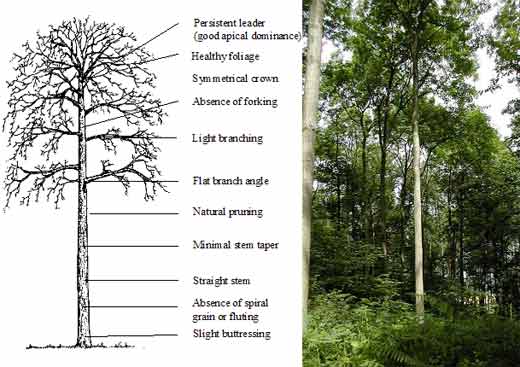Three breeding populations of 40 – 50 plus trees each have been identified within the defined geographical areas of (a) Tayside, (b) Speyside/Deeside/Donside and (c)Southern Scotland/ North of England. In addition a pilot collection carried out by Forest Research in the late 1990’s from the Great Glen area of Northern Scotland was incorporated into the programme. Collections of scions from the plus trees are grafted on potted seedling rootstocks for inclusion in polyhouse seed orchards with a view to early seed production in 3 years. The techniques are well established and follow successful Finnish forest practice. The numbers, locations and current status of plus tree collections are given in Table 3.
Selection criteria for plus trees
Plus trees are selected on the basis of their phenotypically superior stems and crown characteristics and their size and stature in the stand. Dominant and co-dominant trees are selected and the following criteria used:
- Tree stem: straightness, circularity of stem, absence of fluting, bark characteristics.
- Crown: persistence of leading shoot, forking, branch size and branching angle.
Scores attributed to each tree for stem form and crown characteristics are combined to give a single score for the tree in five categories (see below for a Plus Tree Selection Diagram). Plus trees are compared with each other and with up to 5 surrounding dominants in the stand, to demonstrate their superiority.

